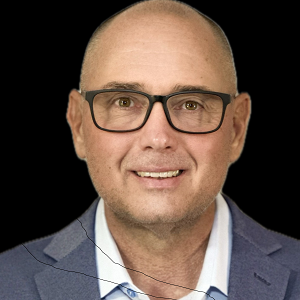Our Electric Engine Transition

Founder Ron Slee returns this week to write about “Our Electric Engine Transition” as professionals.
Many of you have already read of my using the Steam Engine change to the Electric Engine as an indication on how we actually deal with change as a society. Society took advantage of the technology change by acquiring electric engines and replacing their old steam engines. However, if took a change in generation before the true benefits of the electric engine were realized. I attribute this to society not being able to absorb too much change at one time.
I want to revisit changes that have existed over the last seventy-five years and draw a comparison.
1950 The Computer
1960 Disk Storage and Operating System Software
1970 The Internet
1980 Cell Phone
1990 Telematics and GPS
2000 Sensors and Computerized Components
2010 Subscription Services
2020 Artificial Intelligence.
This list is not a completely true representation of when these changes have taken place, but it is close.
Now consider the approach taken during the 1800’s that it took a generation, twenty years, to take advantage of the change in the tool. Now transfer that approach to my list of the eight major changes since 1950. Do any of you think that we have done a good job of exploiting these major changes in technology? These changes in the tools that are available to us.
Let me use one simple example.
Put the computer (1950) with the internet (1970) and tell me the impact that we have realized in the customer service delivery systems of parts ordering.
Some questions please?
What percentage of your parts business comes through the internet?
How do your technicians order the parts they need for a repair or a rebuild?
What percentage of your parts invoices are paid online with a direct transfer of funds?
What percentage of your parts order pickups use a signature pad?
Do you see what I am trying to expose to you?
I bet you order more things online as a percentage of your personal purchases than your company does for their parts order. Isn’t there something wrong with that?
Let’s go in a different direction now. Please consider the following when you sell a machine.
Do you sell a maintenance agreement at the same time?
Do you sell extended warranties at the same time?
Do you sell a machine tracking system at the same time?
Do you sell an “alert” system when there is something going wrong with the machine?
Do you sell Oil Sampling at the same time?
Do you sell a field service response guarantee at the same time?
Do you sell parts delivery services at the same time?
Each of these items can be sold on a “monthly subscription” basis.
In the 1990’s Jeff Bezos started Amazon. He started by selling books. He listened very seriously to his buyers, his customers. He found out what they wanted and needed. He acted on those things that he could and that made sense to him. Go further and look at Steve Jobs and the cell phone or Sam Walton and Walmart.
One of my favorite elements is Artificial Intelligence. The field of artificial intelligence is considered to have begun at the 1956 Dartmouth Summer Research Project that was organized by John McCarthy. The man that is considered to be the “father of AI” is Allan Turing. Let me bring this forward to the world today. ChatGPT was created by OpenAI, an AI Research company. The CEO of ChatGPT is Sam Altman. That has taken seventy years to become a common subject for discussion.
Have you used AI? Have you used ChatGPT? I bet most of you have used both. I do.
At Learning Without Scars is our purpose to help people identify your personal and professional potential. We are aiming at the Lifelong Learning market. By the way, that market doesn’t really exist at the moment. Typically, we go to Grade School, Middel School, and High School. The we either get a job and go to work making a living and a productive member of society or we continue with school. We have the choice of one of three tracks.
- Technical or Vocational Schools.
- Junio or Community Colleges
- Public or Private Universities.
Each of these options uses a campus and facilities and what I call “The Sage on the Stage” teaching.
Lifelong Learning covers people who are already in the workforce. This would be single people and married people. The problem is these people are all remarkably busy. It is extremely hard to hold a job and also go to school. I went to night school to get more understanding of special statistical models. It was really hard to do.
For adult education we have designed our classes to take five plus hours to complete. We suggest that our students take one hour and fifteen minutes each week and take a class. You will be finished at the end of the month. You can select an individual class to upgrade your skills, or you can take class bundles, four classes to eight classes in a bundle.
To close this circle now is very premature. You can expect me to address this subject again. We as a society are in trouble. We have spent trillions of dollars on technology. However, we have not spent very much money on Sociology. Ed Gordon, one of our celebrated Contributors, says that by the year 2030 half of the workforce in the United States will not have the skills to be employable. That is quite a statement, isn’t it? I might argue it to be 2036 but that is nitpicking something that I agree with completely.
That is why adult education is so important. Get ready. You will need to accept changes coming at you faster and faster over the rest of your lives. Are you up to that? I sure hope so.
The time is now.
Did you enjoy this blog? Read more great blog posts here.
For our course lists, please click here.





